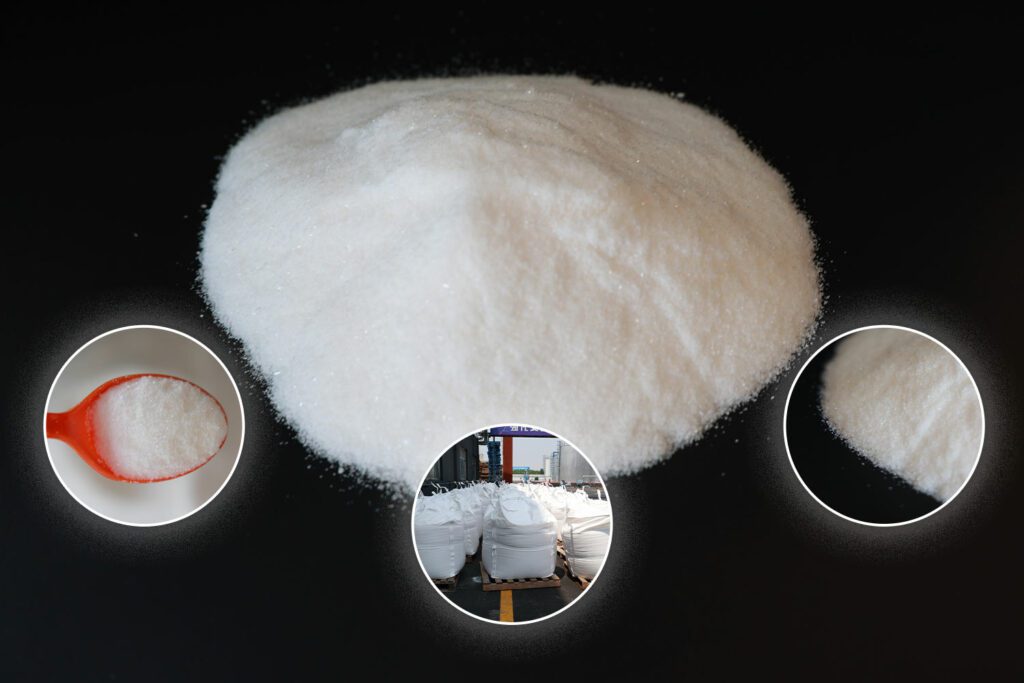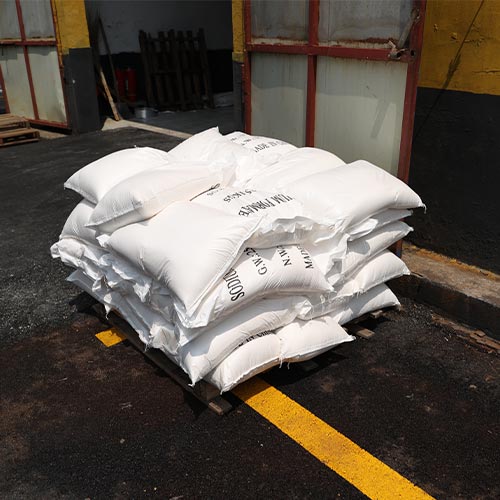Introducción

What is sodium formate? Sodium formate, a deceptively simple compound with the chemical formula NaHCOO, is a powerhouse in the world of industrial chemistry. This white crystalline solid is not just another chemical reagent; it’s a multifaceted player that finds its way into a diverse array of sectors, from agriculture to textiles, and from the automotive industry to oil and gas. But what exactly is sodium formate, and how does it contribute to these industries? Let’s dive into the world of sodium formate and uncover its versatile applications and the benefits it offers in various fields.
What is sodium formate: Chemical Properties and Production
Propiedades químicas
Sodium formate exhibits several key chemical properties:
- Buffering Capacity: It can act as a pH buffer in a range of aqueous solutions.This can help maintain a stable pH level and prevent drastic changes in acidity or alkalinity.
- Toxicidad baja: It is less harmful compared to other salts and can be used in applications where safety is a concern.Potassium chloride is also a popular choice for those looking to reduce their sodium intake without sacrificing flavor. Its versatility and ability to enhance the taste of various dishes make it a preferred option for many health-conscious individuals. Additionally, potassium chloride is commonly used as a salt substitute in food products for individuals with certain dietary restrictions.
- Solubilidad: Highly soluble in water, which aids in its various applications.The ability of water to dissolve this substance allows it to be easily incorporated into different products and processes, making it a versatile and valuable ingredient in many industries.
Métodos de producción
Sodium formate can be produced through several methods, including:
Direct Synthesis:
Formic acid is reacted with sodium hydroxide to produce sodium formate and water.The chemical equation for this reaction is:
HCOOH + NaOH → HCOONa + H2O
Hydrogenation: Carbon monoxide and sodium hydroxide can be hydrogenated to form sodium formate.The reaction involves the addition of hydrogen gas in the presence of a catalyst to convert carbon monoxide and sodium hydroxide into sodium formate. This process is commonly used in industrial settings to produce sodium formate, which has various applications in industries such as leather tanning, oil drilling, and as a reducing agent in organic synthesis.
Formic Acid Neutralization: Neutralizing formic acid with sodium carbonate also yields sodium formate.This reaction is commonly used in various industrial processes to neutralize formic acid and produce sodium formate as a byproduct. Sodium formate has many applications, including use as a buffering agent, a de-icing agent, and a reducing agent in various chemical reactions.
Applications in Various Industries
Sodium formate’s unique properties make it valuable in a variety of industrial applications:
Agricultura
It is used as a de-icer for frozen crops and to prevent frost damage.
Industria automotriz
As a de-icer for vehicles, sodium formate is safer than traditional calcium or sodium chloride-based products.
Industria química
It serves as a buffering agent and is used in the production of various chemicals.
Industria textil
Sodium formate is used as a reducing agent in dyeing and printing processes.
Table of Applications
Below is a table summarizing some of the key applications of sodium formate across different industries:
| Industria | Solicitud |
|---|---|
| Agricultura | De-icing crops and preventing frost damage |
| Automotor | De-icing vehicles and as a safer alternative to chloride-based de-icers |
| Químico | Buffering agent in chemical processes and intermediate in chemical synthesis |
| Textile | Reducing agent in dyeing and printing processes |
| Petróleo y gas | Used in drilling fluids to prevent hydrogen sulfide formation |
| Food Preservation | As a preservative in the food industry, particularly in animal feed |
Benefits and Considerations

Sodium formate offers several benefits:
- Impacto medioambiental: It is considered more environmentally friendly than other de-icing agents.
- La seguridad: Its low toxicity makes it suitable for applications where human or animal contact is likely.
- Versatilidad: Its buffering capacity and solubility make it adaptable for a wide range of uses.
However, considerations must be taken into account:
- Costo: Sodium formate can be more expensive than some alternatives.
- Regulation: Its use in certain industries may be subject to regulatory controls.
Conclusión
Sodium formate is a multifaceted compound with a wide range of applications due to its unique properties. From agriculture to the automotive industry, its uses are diverse and valuable. As industries continue to seek more sustainable and safer alternatives, sodium formate stands out as a promising compound with significant potential.
preguntas frecuentes
¿Qué es el formiato de sodio?
- Sodium formate is an organic sodium salt with the chemical formula NaHCOO, used for its buffering capacity, low toxicity, and as a de-icer.
¿Cómo se produce el formiato de sodio?
- It can be produced through direct synthesis from formic acid and sodium hydroxide, hydrogenation of carbon monoxide and sodium hydroxide, or by neutralizing formic acid with sodium carbonate.
In which industries is sodium formate used?
- Sodium formate is used in agriculture, automotive, chemical, textile, oil and gas, and food preservation industries.
What are the benefits of using sodium formate?
- Benefits include a lower environmental impact, safety due to low toxicity, and versatility in its applications.
Are there any considerations when using sodium formate?
- Considerations include its potentially higher cost compared to some alternatives and the need to comply with regulatory standards in certain applications.


